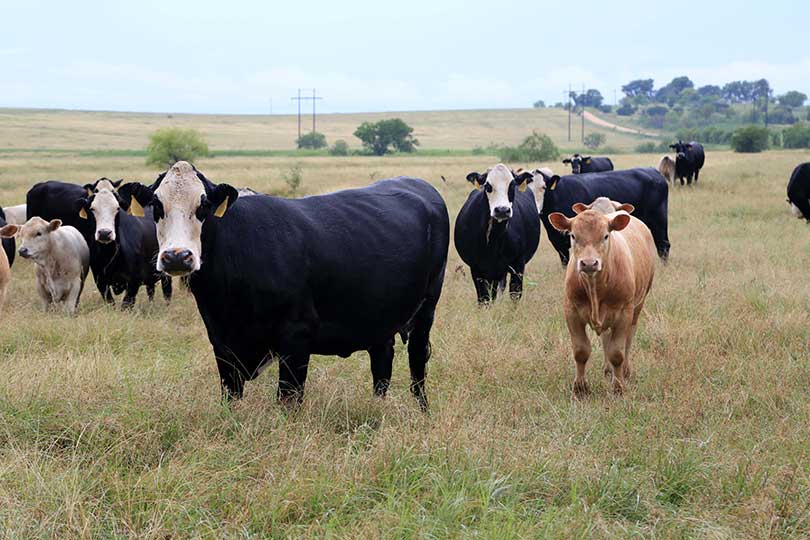Bred cows vary in value according to a number of factors, including age, quality, weight, stage of gestation, hide color, time of year and location.
Research at Oklahoma State University has examined 15 years of auction data in Oklahoma to determine the impact of these factors on commercial bred cow value, according to Drovers CattleNetwork.
Purebred cows are more commonly marketed by private treaty or in production sales.
In the latest weekly combined Oklahoma auction data, bred cow values are reported in a range from $735 to $1,585/head, Drovers CattleNetwork reported.
Changes in any of the listed characteristics, however, could impact the value of the bred cow.
Young cows have the highest lifetime production potential, and thus first-calf heifers have the highest average value, about $35/head more than the four-year-old base cow, according to Drovers CattleNetwork.
Stage of gestation also impacts bred cow value with a first trimester bred cow valued at roughly $50/head lower than a mid-trimester cow.
Value increases for late gestation cows up to eight months bred by about $55/head over mid-trimester cows. Bred cow value, however, drops after eight months bred when cows are extremely close to calving.
Cow quality has a significant impact on bred cow value with high quality cows bringing about 14 percent higher value compared to average quality. And low quality cows bring about 15 percent lower than an average quality cow.
Apart from quality, hide color affects value.
A black-hided cow brings an average premium of nearly seven percent, or $70/head, more in the current market.
The research model appears to be capturing current average bred cow values reasonably accurately, Drovers CattleNetwork noted.
Demand for high quality cows appears to be stronger than usual with current values for high quality cows in Oklahoma reported at roughly $1,550/head or $200-$250 per head higher than the research model would predict.
This likely could be another indication that herd expansion is still going strong.

